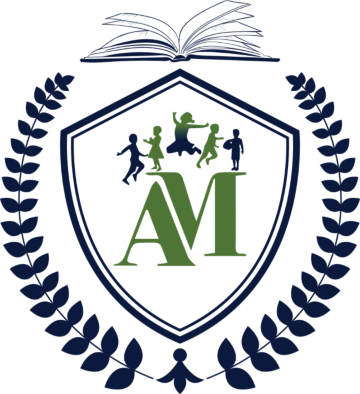Curriculum

The Montessori method aims to educate the whole child. The curriculum is well balanced between academic, creative, and outdoor activities. Children learn a wide range of concepts through hands on experience with concrete materials that are tailored for each specific age group. The classroom is divided into 5 areas, which lay the foundation for lifelong, joyous, and creative learning.
3 Period Lesson
In a Montessori classroom, to introduce a concept or vocabulary and demonstrate the purpose of a material, a teacher uses the 3 period lesson.
1st Period: Name (This is…)
The teacher introduces a new concept or material by slowly naming and showing it repeatedly. For example, to introduce a Geometric solid cube, she would say, “This is a cube.”
2nd period: Recognition (Show me…)
The teacher may identify a material or concept and then request the student to manipulate it. This helps the child to hear the name and associate the object visually as well. For example, “Show me the cube.”
3rd period: Recall (What is this?)
The teacher then asks the students to identify all materials without any assistance. After mastering the 3rd period, they are ready to move on to different, more complex material or concept. For example, the teacher may ask, “What is this?” and if the child says, “This is a cube.”, then he/she is ready to move onto a new concept.
Practical Life
Dr. Maria Montessori regarded the practical life as the most important, foundational area of the Montessori classrooms which helps in developing many essential skills and attributes including:
- Focus and Concentration: Practical Life lessons naturally foster longer periods of focus within the child because they are so attractive and require precision and detail.
- Fine Motor Skills: While dong lessons, the child strengthens his muscles through constant repetition of motions. He also perfects his eye-hand coordination and gains confidence in a particular skill.
- Order and Sequence: The Practical Life lessons help a young mind in constantly organizing and categorizing information.
- Success: The young mind overcomes the fear of “failing” and starts understanding that learning comes by returning to is over and over again.
- Responsibility and Respect: The child is given the opportunity to participate in real lie activities at a young age. This teaches them responsibility and respect towards others.
Practical Life Sequence:
- Care of Self: grooming, hygiene, dressing (zip, tie, button), hand washing etc.
- Grace and Courtesy: conflict resolution, manners, communicating politely, precision of movement.
- Practical Skills: transfer, pour, thread, twist/turn, squeeze
- Care of Environment: wipe, scrub, polish, sweep, maintain neatness
- Art and Gardening: Children are exposed to fine arts, famous artists and their techniques. This helps them gain appreciation for the person and process. Children learn to take care of their environment by taking care of plants and flowers in the garden. They engage in activities like digging, planting, watering, weeding etc. while using the equipments such as child sized-rakes, shovels, buckets etc.
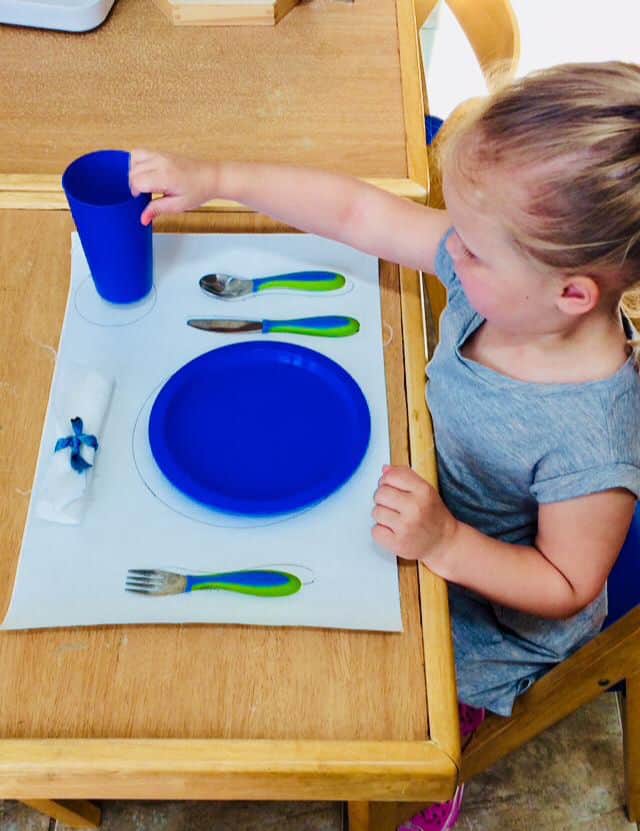
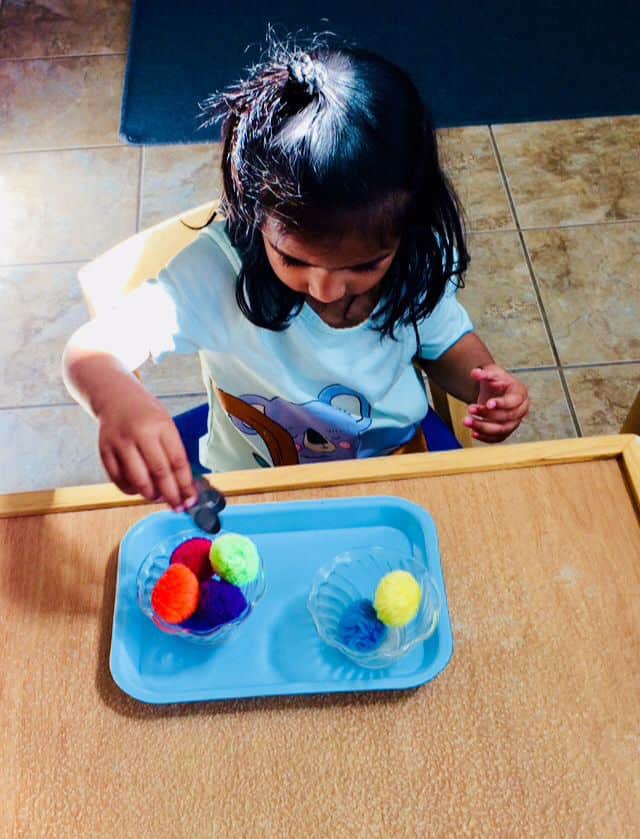

Sensorial
This area of the Montessori classroom includes materials that help the child refine discrimination with all the 5 senses. The child discriminates differences pertaining to:
- Height, Length, Width, Series, Form, Dimensions
- Sound, Tones of Voice, Texture, Smell, Taste, Temperature
These materials and lessons help in preparing the child’s mind for later mathematical concepts, improving spatial skills, and enriching vocabulary.
Sensorial Sequence:
- Color Grading
- Tactile Discrimination
- Auditory Discrimination
- Olfactory Discrimination
- Dimensions: Length, width, height
- Geometric shapes and solids

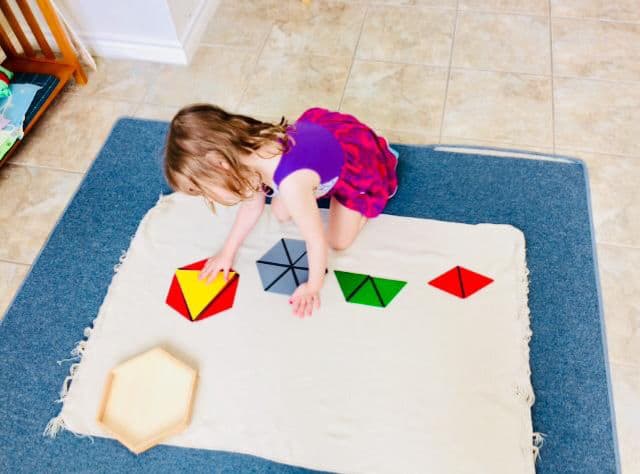
Math
In this area, the child internalizes the concepts of numbers, symbols, sequences, operations, and basic facts by using manipulative materials. The children learn with greater ease when they get an opportunity to manipulate these colorful and dynamic math materials. Number rods, golden bead work, colored beads, cards and counters, and other lessons teach children to learn abstract mathematical concepts by manipulating concrete objects. For example, the children learn the concept of odd and even by manipulating “cards and counter” lesson.
Math Sequence:
- Numeration: Identifying numbers, sort, count, match quantities
- Linear Counting 1-100, teens, tens, skip counting
- The Bank: Decimal System (unit, tens, hundreds, thousands, place value)
- Large Operations: Conducting equations into the thousands
- Simple Operations
- Time, Fractions, Money
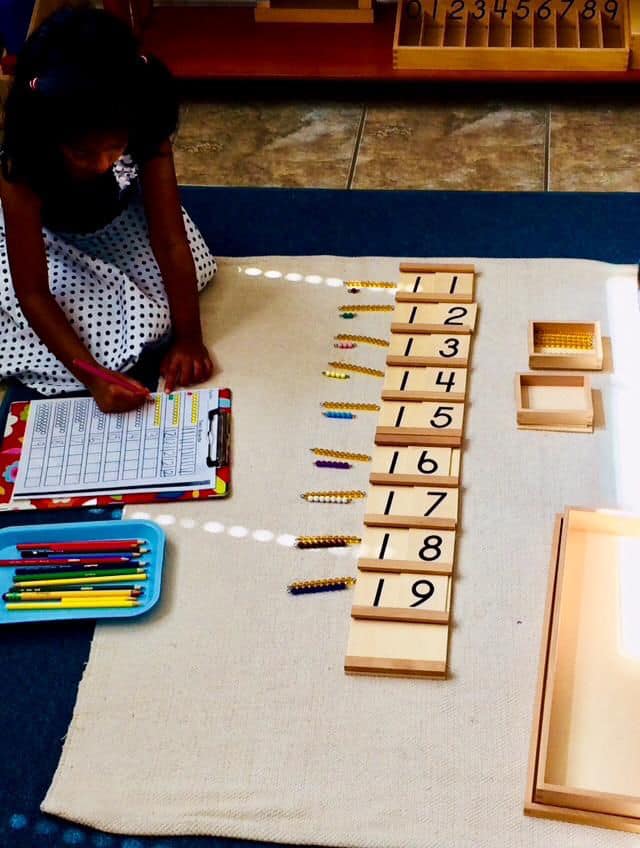

Language
Teachers introduce this area through poetry, songs, literature, story discussions, nomenclature, cultural vocabulary etc.
The students learn each letter phonetically by using tactile alphabets called sandpaper letters. This helps them combine sounds to form words. The other tactile equipment which helps in developing reading and writing naturally is called Movable Alphabet. The use of these concrete materials help the child in learning the abstract language naturally. They learn control of the hand and use of the pencil through many exercises and specially designed tasks. Soon, they are able to spell words, compose sentences, and work on punctuation and capitalization with the Movable Alphabets.
Language Sequence:
- Auditory: Comprehension, opposites, rhyming
- Visual: Pictures, word match, letters
- Development of writing
- Beginning sounds, vowels, ending sounds
- Blending sounds and word buildup
- Short vowels words
- Sight words
- Consonant blends
- Long vowel words
- Digraphs, phonograms
- Grammar
- Comprehension and Story Composition
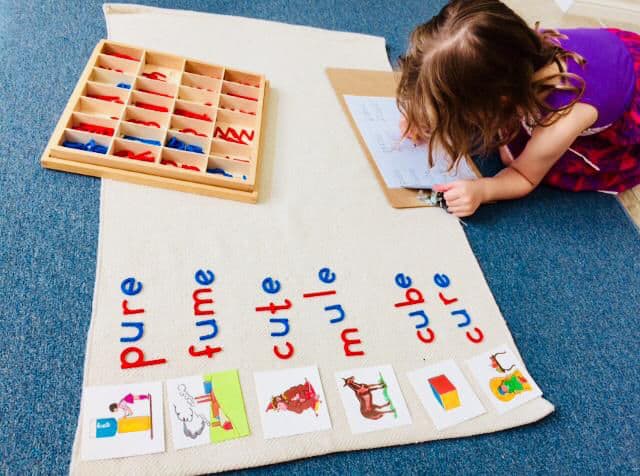
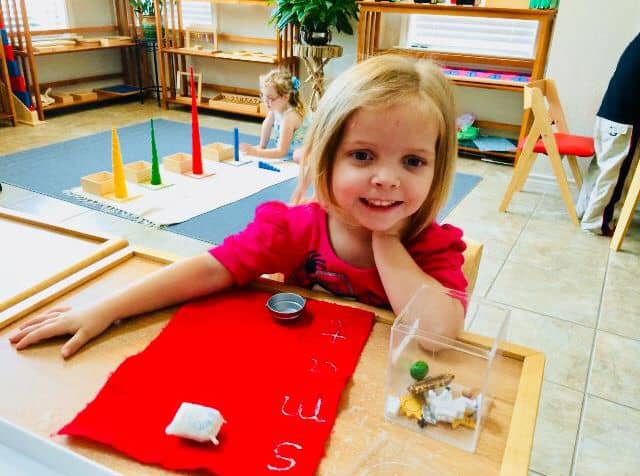
Science
In a Montessori classroom, through various discovery projects and experiments, a child’s natural curiosity is stimulated. They study plant and animal kingdoms, as well as magnets, energy, weather etc. Science education helps a child with:
- Observation of Phenomenon
- Recording it in simple words
- To draw conclusions
Science Sequence:
- Zoology: Classifications, Body parts and functions, habitats, life cycles
- Human Anatomy: Parts of our body, organs, systems etc.
- Botany: Classifications, plants, life, cycles etc.
- Earth, Ecosystems/Biomes
- Water Cycle, Physical states
- Machinery, Tools etc.
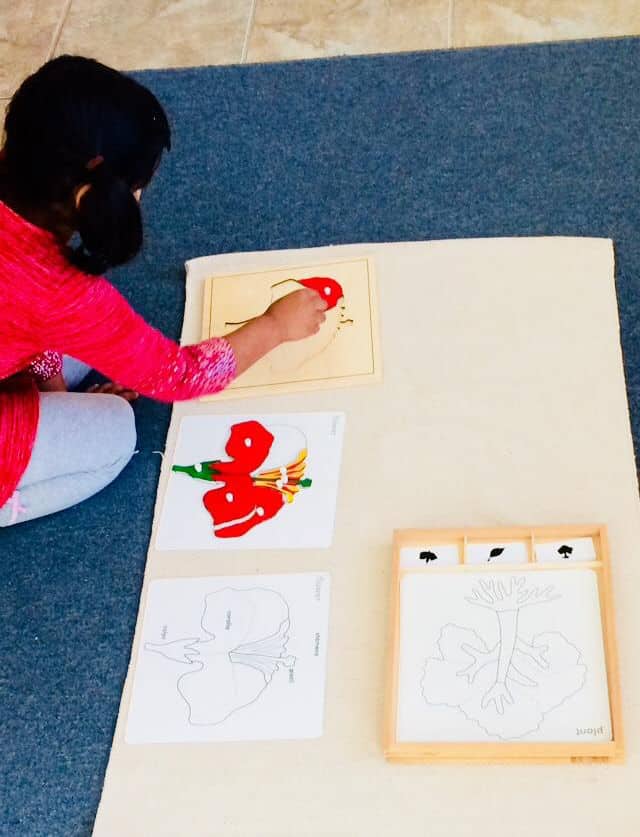
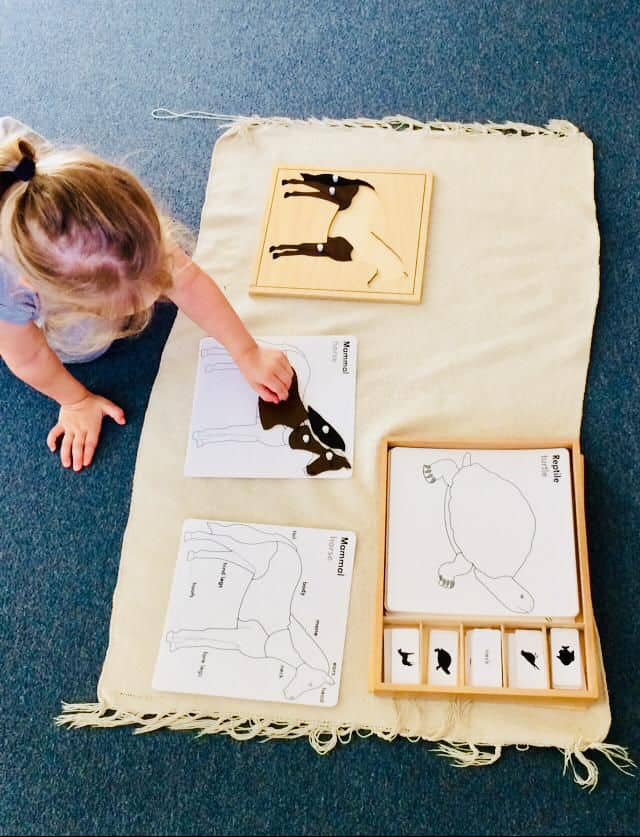
Culture
In a Montessori environment, cultural studies includes many different areas of learning such as: Geography, History, Social Studies, and Foreign Language.
Geography focuses on the location of places around the world. Children explore the living continents of his/her environment with the help of representative materials. Through Montessori tailored maps and puzzles, students learn about the different continents, as well as the respective countries and states. They also learn about the customs, climate, and languages of the people around the world. By making clay model replicas, children learn about common land and water formations such as islands, peninsulas, etc.
Cultural Sequence:
- Land/Water
- Oceans
- Seven Continents
- 4 Seasons and 4 Directions
- Countries around the world
- United States of America
Foreign Language: We incorporate Spanish daily into our curriculum in order to familiarize our students with basic commands, greetings, vocabulary, colors, numbers, etc. Through constant exposure, students will naturally develop an understanding of Spanish.
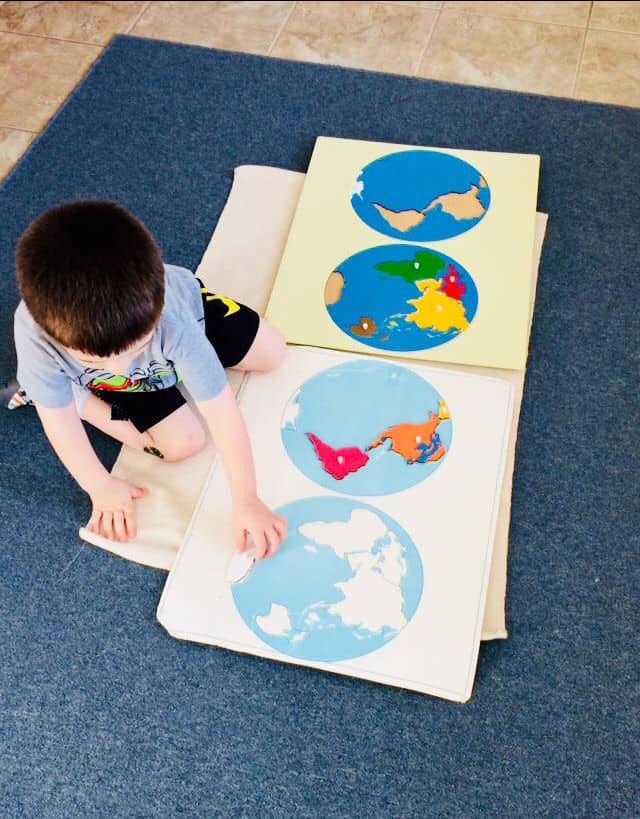
Enrichment Activities
At Ace Montessori, we offer many enrichment activities which are listed below:
- Yoga
- Music
- Spanish
- Computers
- Nature Study
- PE (Physical Education)
- Theme based Arts/Crafts
